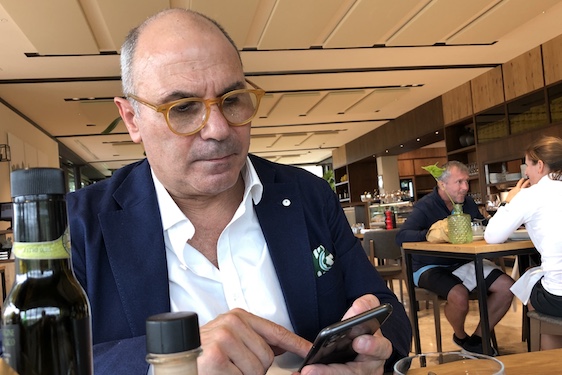GOSTELOW REPORT—“The key to success right now is local — local history, local food,” says Isidoro Di Franco, general manager of Toscana Resort Castelfalfi, 70 minutes’ drive southwest of Florence, Italy.
He has all the local advantages any hotelier could dream about. Castelfalfi is a typically Tuscan medieval village long associated with the Medici family. In all it occupies 2,700 acres of rolling hills and woodland, roughly 60 acres of which are planted with highly fruitful vineyards, source of the estate’s Tenuta di Castelfalfi wines. There are, in addition, over 10,000 olive trees, producing all the oil that anyone could need.
The hilltop village itself has a main street, now pedestrianized. It has a four-floor castle, used for events, with regular art exhibitions in the lowest floor, opening directly on to the main street.
TUI, the all-purpose German travel giant, saw the potential of turning such history to the needs of current tourism. It started buying up buildings, many of which were converted to units, apartments or whole houses, for sale as 48 holiday homes, bought by eager buyers from 15 countries. TUI also cleverly formed two hotels, a mid-level and the 5-star Castelfalfi, the only wholly TUI-managed property in its top-tier TUI Blue Collection. As well as marketing via TUI, Toscana Resort Castelfalfi is part of Preferred Hotels and Resorts (“vital for our U.S. business,” said Di Franco).

During a hotel stay, guests mingle with residents from the vacation homes, as if exactly following the Di Franco plan whereby this is a place that pairs hospitality and real estate to produce a community, and real estate is the ambassador that brings friends together.
Day-long there are many walking the main village street, where TUI-owned small shops have been leased to artisanal suppliers and craftsmen. Rent a bike here, buy your fresh parmesan there, and pick up just-baked bread along the street. Stop for gelati or Aperol, a local bitters aperitif akin to Campari.
Residents can buy concierge services and full housekeeping support from the resort.
Residents of the vacation homes help us make this a year-round community. A household-name Italian designer, who craved our privacy, was one of the first to buy,” said Di Franco, not mentioning the relevant name.
Born in Palermo on the Italian island of Sicily, Di Franco moved here in 2017 after many years with Marriott International. He reports to a TUI supervisory board member.
“A leader must work 70% of his time to engage,” said this live wire who must market and run two hotels while keeping hotel guests and local residents happy.
The two golf courses, with a total of 27 holes, are busy with guests and residents, plus 255 club members. For hotel guests, Di Franco and his team of about 200, all of whom are Italian, organize at least 51 experiences every week. Some are complimentary, others — say, truffle-hunting with a professional and his dogs, or learning pizza-making from a master — run more than value-for-the-money. There is also a popular spa, which does plenty of business with temporary and longer-term clients, some of whom really like treatments with grape-based Lajatica products.
“It all sounds idyllic but one challenge is the length of time it takes to get permits in Italy. We had been working since 2011 on our golf clubhouse, which opened Saturday 3rd October, 2020. Now we would like a congress center and another hotel but they will be many years in the planning stages,” Di Franco admitted.
